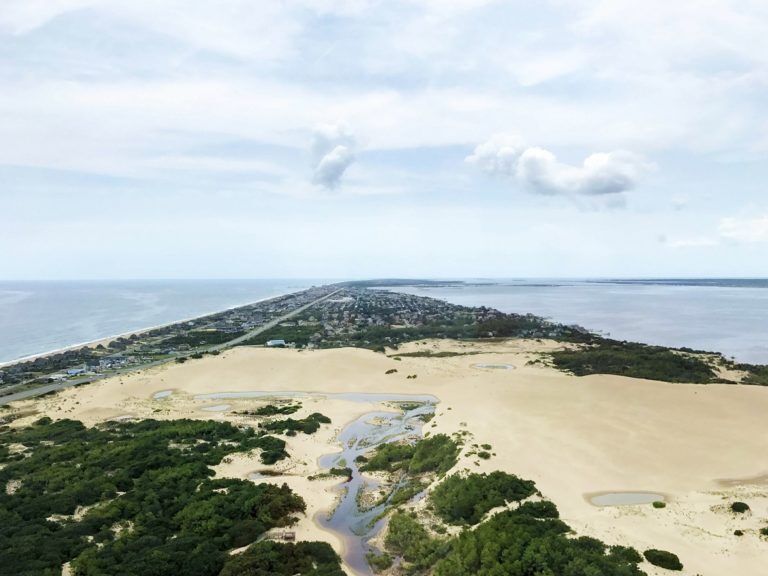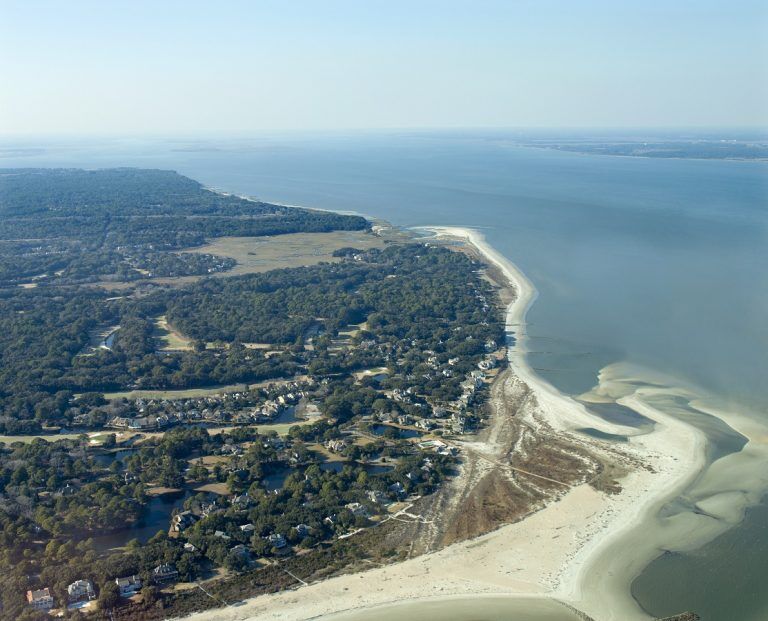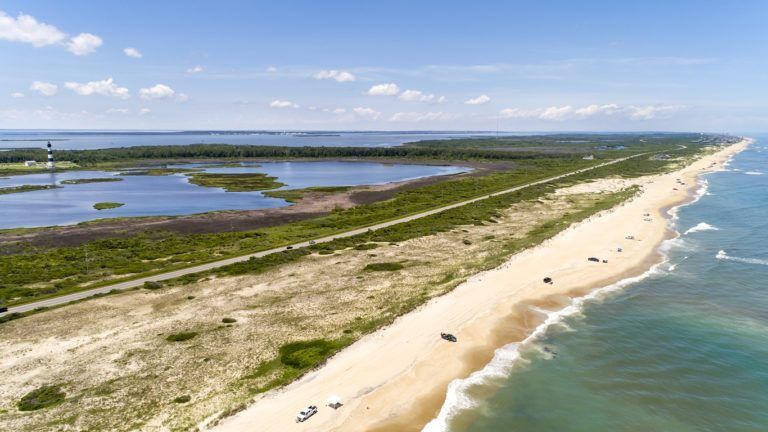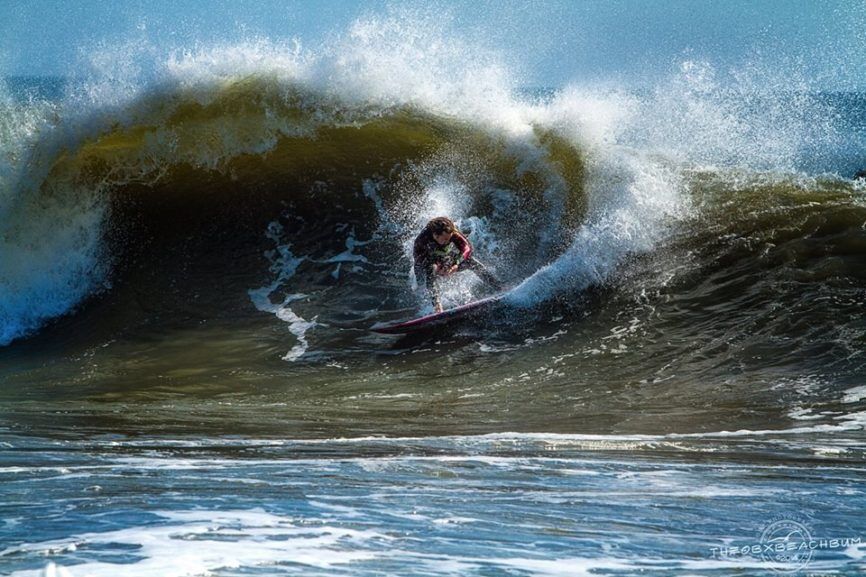Both the Outer Banks and Hilton Head are beloved for their beautiful beaches and commitment to preserving nature. While they share some similarities, these destinations offer distinct experiences. Let’s dive into a comparison to help you choose the best spot for your next trip.
The Outer Banks vs. Hilton Head: Environmental Stewardship
Outer Banks: Diverse Natural Environments
The Outer Banks is renowned for its extensive protected areas, including maritime forests and dunes. Visitors can explore varied landscapes, from the towering dunes of Jockey’s Ridge State Park to the rugged trails of Nags Head Woods. The diverse environments offer a mix of easy and challenging trails, providing a range of outdoor experiences.

Hilton Head: A Commitment to Preservation
Hilton Head has a strong reputation for environmental stewardship, emphasizing the conservation of its natural beauty since its development as a resort in 1956. The island features smaller ecological preserves compared to the Outer Banks, with well-maintained trails suitable for walking and biking. The nearby Pinkney Island National Wildlife Refuge offers additional opportunities for exploring nature, although it’s smaller than the Outer Banks’ Alligator River National Wildlife Refuge.

The Outer Banks vs. Hilton Head: The Beach Experience
Outer Banks: Expansive and Natural
With over 100 miles of coastline, the Outer Banks boasts expansive beaches with soft sand. The beaches here are publicly accessible, with ample free parking, making them easily reachable for all visitors. The area’s commitment to preserving the natural landscape means there are no high-rise hotels, providing an unspoiled beach experience.

Hilton Head: Varied Sands and Limited Access
Hilton Head offers 12 miles of beaches, with a mix of soft and hard-packed sand. The harder sand allows for activities like biking along the shoreline. While some free parking is available, much of the beach access is controlled by parking meters or long-term permits. Like the Outer Banks, Hilton Head’s beaches are public, but access points can be limited due to private developments.
The Outer Banks vs. Hilton Head: Surfing and Wind Sports
Outer Banks: Surf Haven
The Outer Banks is famous for its excellent surfing conditions, thanks to the unique offshore geology and proximity to the Gulf Stream. Locations like the S Curves near Rodanthe are known for producing some of the best waves on the East Coast. The constantly shifting sandbars and temporary reefs also contribute to ever-changing surf conditions, making it a prime spot for surfers and wind sports enthusiasts.

Hilton Head: Calm Waters and Windsports
Hilton Head’s surf conditions are generally calmer due to its configuration relative to the Atlantic Ocean. The island’s location creates less dynamic wave action, but the open waters near Port Royal Sound provide opportunities for kitesurfing and other wind sports. While the area isn’t as extensive or shallow as the Outer Banks’ sounds, Hilton Head still attracts wind sports enthusiasts.

The Outer Banks vs. Hilton Head: Lodging
Outer Banks: Vacation Homes
The Outer Banks offers a wide range of vacation rental homes, ideal for families and groups looking for a home-like experience. These homes are scattered throughout the area, providing options close to the beach or in more secluded locations.

Hilton Head: Hotels and Resorts
Hilton Head’s lodging is dominated by hotels, many of which operate as self-contained resorts. The island’s original concept as an exclusive resort destination has influenced the availability of accommodations, with many hotels offering prime beachfront locations. There are also upscale rental homes available, though they are typically farther from the beach compared to the Outer Banks.
The Outer Banks vs. Hilton Head: Golfing
Hilton Head: A Golfer’s Paradise
Hilton Head is a premier golfing destination, boasting 16 golf courses on the island and two more nearby in Bluffton. The variety and quality of the courses make it a top choice for golf enthusiasts.

Outer Banks: Limited but Challenging
The Outer Banks offers fewer golf courses, but they provide unique challenges. Courses like Nags Head Links are known for their exposure to strong coastal winds, testing even experienced golfers. The region’s limited space means fewer courses, but they still offer a quality golfing experience.
The Noticeable Differences
Climate and Water Temperature
Hilton Head has a humid subtropical climate, with hot and humid summers. The island’s water temperatures are warmer than the Outer Banks, averaging around ten degrees higher in the summer. The Outer Banks, with its frequent coastal breezes, offers a more temperate summer experience with cooler ocean waters.
Accessibility
Hilton Head is more accessible, with a local airport offering regular flights. The island is also close to larger population centers, with Savannah, Georgia, just 31 miles away. The Outer Banks, while more remote, can be reached by car and has ferry services, though it lacks a commercial airport.
Both the Outer Banks and Hilton Head provide unique vacation experiences, each with its own appeal. The Outer Banks offers a more natural and laid-back atmosphere with a focus on outdoor activities and unspoiled beaches. Hilton Head, with its luxurious resorts and extensive golf courses, caters to those seeking a more refined and convenient vacation. Choose the destination that best matches your vacation style and preferences.
Outer Banks vs. Hilton Head: Which Is Better?
Ultimately, the choice between the Outer Banks and Hilton Head depends on your vacation preferences. If you seek a natural, laid-back experience with expansive beaches, excellent surfing, and a variety of outdoor activities, the Outer Banks is the ideal destination. On the other hand, if you prefer a more refined getaway with luxurious resorts, top-notch golf courses, and calm waters, Hilton Head offers a perfect retreat.
Both destinations have their unique charm, making either a great choice for a memorable beach vacation. Your decision will hinge on whether you value the rustic beauty and adventurous spirit of the Outer Banks or the sophisticated leisure and convenience of Hilton Head.
